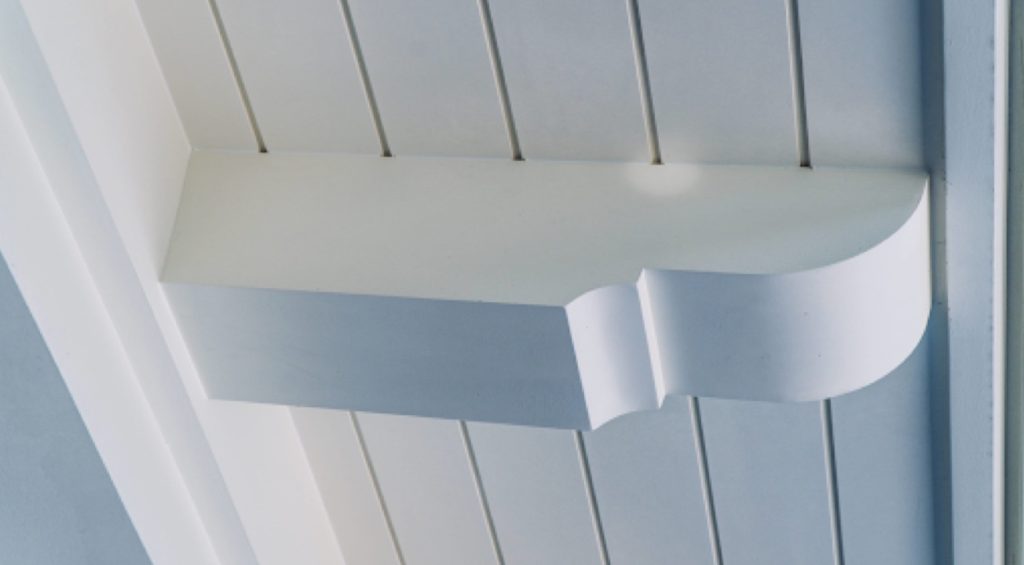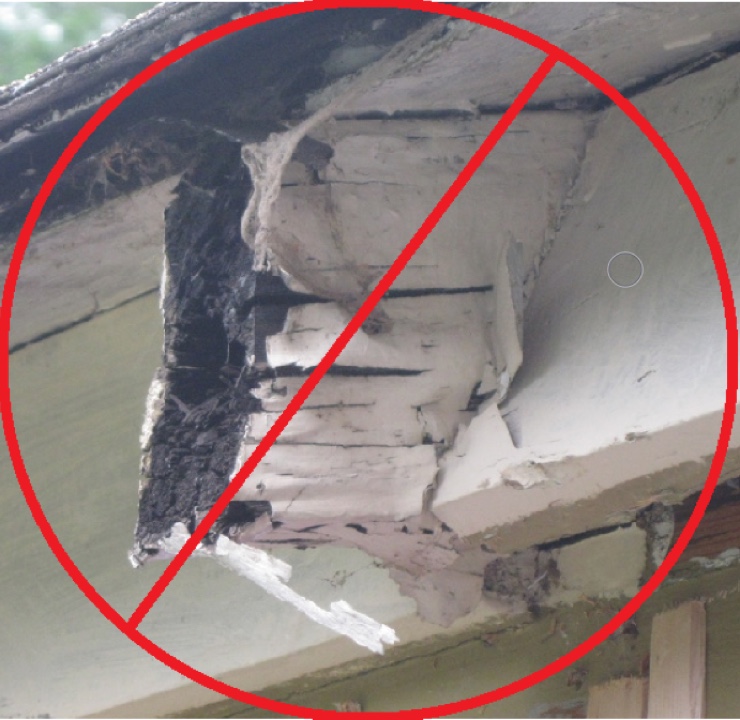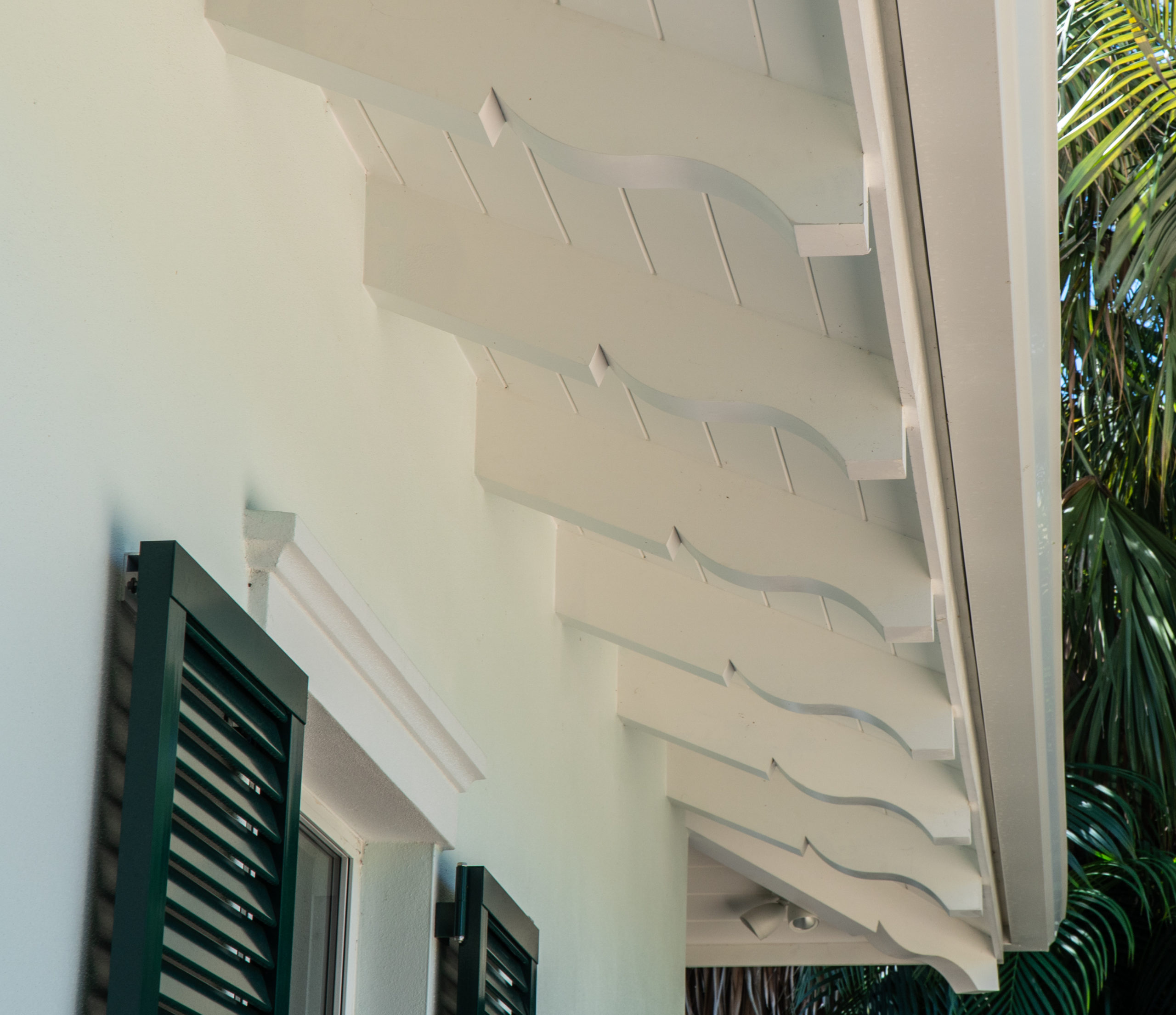Table of contents
- What is a rafter tail?
- How long do wooden exposed rafter tails last?
- How long do exposed PVC rafter tails last?
1. What exactly is a Rafter tail?
Architects refer to the exposed exterior portion that projects beyond the perimeter of the wall as a rafter tail. The rafter tail is secured to the top of the wall or tie beam and projects outward to support the soffit overhang.

The rafter tail is scrolled, detailed, and is a major component of the soffit system in timber frame construction (To learn more about soffit systems, read our “what is a soffit system” blog post).
We refer to them as Rafter tails because they are the tail end or exposed end of a rafter.
2. How long do wooden exposed rafter tails last?
Residential and commercial property owners frequently ask how long will their wooden exposed rafter tail last. Traditionally rafter tails have always been made of wood and like all wooden products, they require a high degree of maintenance and upkeep. They will need to be replaced by professionals after the first sign of cracking.

The demand to use decorative exposed rafter tails has always been high but they came with steep maintenance cost. Now the world of architects, builders, and homeowners has changed as we move into a new era of synthetic PVC materials.
3. How long do exposed PVC rafter tails last?
The life cycle of HB Elements PVC rafter tails is a lifetime, but they will require proper installation, low-cost maintenance, and care. As long as they are not installed incorrectly, used as a structural element, painted or finished incorrectly they will have this awesome, low maintenance, extremely durable, and long-lasting life cycle.
PVC rafter tails have many different characteristics that improve the life, looks, and longevity of an exterior rafter. Unlike their wooden counterparts, PVC rafter tails are impervious to mildew, rot, moisture, cracking, warping, and insects or pests. The life cycle of our PVC rafter tails is a Lifetime, it should never deteriorate and or need replacement, because of the sheer durability and longevity of its core material, Cellular PVC as well as the patented building process we use to fabricate our components.
On a final note, since rafter tails are an exposed building component one of the core materials used to make the pvc rafter tails is the mineral titanium dioxide, which acts like a built-in sunblock that protects the PVC Rafter tail from the sun. With this comes incredible durability in its core make up, but we highly recommend painting PVC rafter tails with acrylic latex paints for a great look and a long-lasting life cycle.
We recommend architects, homeowners, and builders to read our ultimate guide to rafter tails for more information on the history, use, and installation of PVC rafter tails.











